Toyota RAV4 review and buyer's guide
Toyota RAV4 is the best-selling medium SUV in Australia, offering good resale value and envious fuel economy. If you need an enormous boot and a simple, functional family vehicle, RAV4 is hard to beat. But can you justify the price?
The Toyota RAV4 is a highly popular medium SUV that can carry five and offers potentially excellent fuel economy in addition to the big boot and a durable, general-purpose cabin designed to cope with family demands.
If you’re shopping for a well-rounded medium SUV that doesn’t aspire to anything more than just being good enough, the RAV4 is quite adequate for meeting most of your daily transport needs.
The RAV4 today would fit inside the dimensions of a 20-year-old Toyota Corolla - because small cars got big - but that’s a benefit overall for growing families. But it’s important to find out just how much practicality you get with your RAV4 and see how it compares to other options in the medium SUV segment.
This generation is the nicest a RAV4 has been to drive. It’s a much stiffer version that the old one, its centre of gravity is lower, the ground clearance is increased 15mm to make it more practical over kerbs, awkward driveways and kerbs. The front and rear overhangs are shorter thanks to a minor increase in wheelbase length despite being slightly shorter in overall length.
Essentially, there’s more cabin room and the whole vehicle is a fairly tight package, despite its deceptively wide-looking frontal area. But is it enough against the much more modern, even futuristically styled medium SUVs in the rest of the market?
The RAV4 today is not perfect, but for better and for worse, it has advantages and disadvantages compared to vehicles like the Kia Sportage, the lavish Mazda CX-5, the sci-fi styled Hyundai Tucson and soft-roading all-wheel drive Subaru Forester, and the Mitsubishi Outlander with its clever third-row seats. There’s also the very budget-conscious MG HS.
All of these vehicles are competing for your cash.
The RAV4 is only 4.6m long, so if you’re stuck with a tight single-car garage or some kind of size restrictions, you’ll want to check the dimensions first, but it shouldn’t be an issue. Having said that, RAV4 is no more or less the size of its rivals, so it might not be any more problematic than other medium SUVs.
Toyota RAV4 might be the most popular medium SUV, but it’s not necessarily the best. Popularity aids resale value in the future when you come to sell the vehicle on, and there’s merit in that, but it’s not the full story.
Here’s an idea of the sales figures for 2023, and keep in mind that last year’s data was taken during the first full Australian year without the full effects of pandemic influence to skew the numbers.
One of two key reasons RAV4 is so popular is that Toyota sells its vehicles in vast numbers to government and business fleets - it’s certainly the biggest market player. The second reason is that Toyota has enjoyed a significant brand loyalty in Australia for years, which is connected to the greater resale value Toyota models enjoy in general. But resale value isn’t the most important aspect because during your ownership period it needs to function and meet your needs.
The RAV4’s bigger brother, the Kluger, has a two-tonne towing capacity, proper seven-seat layout and ample legroom with an abundance of rear storage. But the RAV is more reserved in both capability and price. This is also the case when it comes to using the hybrid for anything other than city stop-start driving. We’ll get to that.
The RAV4 offers a bunch of selectable drive modes which is helpful during heavy rain, on gravel backroads, even up to the snow on sealed roads. But let’s temper your expectations here because you’re not going to get as far off the sealed roads as something like a Subaru Forester or the Mitsubishi Outlander with its Super All-wheel Control.
But be warned: getting out of any SUV’s depth of capability, you can easily break your SUV >>
Firstly, let’s break down the RAV4 range and establish pricing, specifications and what does and doesn’t work for your budget and personal circumstance. Then we’ll get stuck into the powertrain and what a RAV4 is capable of.
One other thing. Australian’s have a bias favouring anything with a Toyota badge. So let’s try to put that aside and do this based on objective criteria. It’s more dignified that way.
A NEW RAV4 IS COMING FOR 2026…
Toyota is calling it a new generation of RAV4, except it’s built on the same platform as the current version.
What needs to be said immediately with the news of a new RAV4 coming for 2026 is that the current version is only six years old. For Toyota, that’s a pretty short lifecycle to change over to a new model.
This new RAV4 will include a plug-in hybrid model for the first time, so at least it’s typical Toyota in that regard, coming to the PHEV party late. (The current RAV4 has a PHEV variant called the ‘Prime’ which is available in the US, but not in Australia.)
They’re claiming up to 100km of electric-only driving (so it’ll probably be more like 70-80km in reality) , and will be available in both front-wheel drive and all-wheel drive.
The new RAV4 will also be a hybrid-only vehicle, dropping combustion-only from the range entirely, and it will also be available in front- or all-wheel drive. As will the GR Sport variant which now debuts on the RAV4 after LandCruiser 300, Yaris and Corolla.
Toyota Australia says the hybrid system itself is new, meaning the lithium-ion battery and AC electric motor are new, the latter of which makes 22kWh - but it’s the same 2.5-litre petrol engine we know from the current RAV4. That’s okay, because it’s proven reliable and doesn’t need changing (because that would just mean unnecessary additional cost to you).
According to Toyota Australia, “geofencing technology” will be utilised by:
combining real-time road and traffic data along with insights from the driver’s typical routes and driving style”
…to prioritise the most efficient side of the powertrain for particular conditions. That might sound like driver stalking to you (where, notionally, Toyota collects your driving data and sells it to insurance companies), or maybe it’s perfectly benign and quite helpful. But who really knows without independent imperial testing.
What’s interesting is that they prioritise telling you about this geofencing feature before discussing the PHEV’s DC battery’s charging capability of up to 50kW thanks to its inverter. They reckon you can charge from 10-80 per cent in about half an hour.
The AC charging capacity of 11kW, Toyota suggests, can be done in just 3 hours. In reality, that may be quite different if you don’t have the capacity to supply that much electricity, which you probably don’t. (Carmakers are good at making grandiose claims with little to no context.)
RAV4 PHEV’s front motor will now make 150kW (up from 134kW in the US market plug-in hybrid) for an overall 227kW output on the AWD version, making it the most powerful RAV4 to date. But it’ll also be the heaviest RAV4 ever, weighing just shy of two tonnes - 1950kg to be precise. That’s a power-weight ratio of 117kW per tonne, which is a dramatic improvement over the 90kW per tonne ratio of the outgoing parallel-series hybrid RAV4.
The front-wheel drive PHEV will put out 201kW, which will be cheaper than the PHEV, obviously.
The plain old series-parallel hybrid will both make 143kW in either front-wheel drive or all-wheel drive. That’s going to produce a power-weight ratio pf 125kW per tonne, making it a 38 per cent increase over the current version. That’s substantial.
There’s going to be a new infotainment touchscreen which will, no doubt, be marginally less slow than the old unit, there’s now front cross-traffic alert to hit the brakes in low-speed driving scenarios where a vehicle, pedestrian or bike emerges in front.
The GR Sport will be the more desirable versions, sporting red stitching on black leather (and other cosmetic highlights like logos and badging, so you’ll never forget what you bought). Plus, 20-inch allow wheels and 20mm of additional track width for a tougher, wider stance, uprated dampers for sportier handling, stiffer rear anti-roll bar with re-tuned dampers and steering calibration.
The new RAV4 isn’t expected to be on sale until the first half of 2026, but you can expect price increases of a couple of grand over the current model. Although, it will be interesting to see how the new RAV4 compares, value-wise, with the already highly capable Mitsubishi Outlander PHEV >>.
FEATURES & PRICING
RAV4 has a model grading system a bit like the Mazda CX-5, only it’s no longer split between combustion-only or hybrid powertrains. You can now only have a hybrid RAV4.
But you can change the drivetrain to be either front-wheel drive, or on-demand all-wheel drive which is front biased with on-demand rear-drive input under relatively high load or throttle demand, or during traction loss or wheelspin events.
RAV4 ‘GX’
$47,000 driveaway approx. (2.5L hybrid 2WD) | $50,100 driveaway approx. (2.5 hybrid AWD)
You get:
Apple CarPlay/Android Auto, DAB+ digital radio, 8-inch touchscreen, satnav
17-inch alloy wheels & space saver spare (full-size optional)
Adaptive cruise control, autonomous emergency braking with night/day pedestrian detection and day-only cyclist detection
Lane departure warning, lane change assist, blind spot monitoring and rear cross-traffic alert
Auto high beam, speed sign recognition
7 airbags and five-star ANCAP safety rating (from 2019) >>
LED daytime running lamps, taillights and front foglamps, auto LED projector headlights
Electric heated folding door mirrors, rain-sensing wipers
Front and rear parking sensors, keyless entry, push-button ignition
Front-only ‘dual-zone’ climate control (no rear AC vents)
Optional full-size spare wheel; space-saver spare by default
Cloth seats
RAV4 GXL
$50,700 driveaway approx. (2.5L hybrid 2WD) | $53,800 driveaway approx. (2.5 hybrid AWD)
The ‘GXL’ is probably the more balanced value proposition here adding minimal expense for more equipment, without becoming too dear. Here’s what you get:
The thing with buying a new Toyota is grasping the fact it’s not strictly the best value proposition against its competitors.
You buy a Toyota for its strong customer service, generally good reliability and good resale value. But you do pay a lot for a Toyota these days.
But if you’re an urban dweller, like most typical SUV buyers, you’ll rarely need to tow anything. The GXL hybrid (eFour) is $48,800 before on-road costs, which is already getting pretty steep considering the Outlander Exceed maxes out at $52,600. And it has 7 seats.
GXL features include:
Reversing camera with moving guidelines
18-inch alloy wheels
Privacy glass and wireless charger
Dual zone auto climate control
Premium cloth seats
Parabolic, auto-levelling LED headlights (projector LEDs on hybrid)
Proximity smart key
RAV4 XSE
$54,650 driveaway approx. (2.5L hybrid 2WD) | $57,800 driveaway approx. (2.5 hybrid AWD)
18-inch gloss black alloy wheels
10.5-inch touchscreen, 12.3-inch driver’s display, satnav, power tailgate
Black: door mouldings, exterior mirrors, fog lamp detailing, front and rear bumper, grille, overfenders and two-toned roof
“SofTex” cloth seats, driver and front passenger heated seats (high/low)
Go up again to the RAV4 ‘Cruiser’ and you’re looking at a firm for the front-drive hybrid version, or $54,600 for the combustion-only front-wheel-drive, or just throw money at it by getting the hybrid all-wheel drive ‘Cruiser’ for $54,400.
RAV4 Cruiser
$57,250 driveaway approx. (2.5L hybrid 2WD) | $60,300 driveaway approx. (2.5 hybrid AWD)
18-inch gloss black alloys
Tilt and slide moonroof
Panoramic view monitor
Premium 9-speaker JBL sound system with DAB+ digital radio
Power tailgate
Driver and front passenger heated leather seats, 10-way power adjustable
And lastly, if you’re feeling particularly lavish, there’s the RAV4 ‘Edge’ which is seriously pushing the limits of what’s acceptable for a Toyota SUV these days. Your options for the Edge are much simpler than the other grades.
RAV4 Edge
| $63,800 driveaway approx. (2.5 hybrid AWD-only)
19-inch matte grey alloy wheels
AWD petrol gets 8-spd auto | hybrid: 6spd CVT
Panoramic tilt/slide moonroof
Driver and front passenger heated and ventilated leather seats
Selectable off-road mode with rotary dial
Downhill assist control
At this point, you’d be forgiven for thinking the RAV4 range is too complicated - because it is. It truly is convoluted, although credit where it’s due: it’s much simpler now with only the hybrid powertrain to choose from. So consumers like you ought to be careful when selecting exactly which variant you want with the appropriate feature you need.
The GX is obviously the ‘budget option’, as a price-leader for strict budgets and fleet managers buying in bulk for the company. The GXL is very popular as the next step up to offer a little bit more flair without going crazy on the price, and of course the XSE is a slightly sexier version for those wanting a bit more polish on their GXL so it doesn’t look like one up from the poverty pack.
The Cruiser is a good mix of useful luxury appointments without going to excess, and the Edge is going to give you all the fruit, but also it’ll be worth the most at trade-in time further down the road when you’re ready for the new RAV4 in 5-8 years’ time.
ENGINES
So here it is in layman’s terms.
You get one engine options and it’s he one Toyota has proven to be the most reliable, the most economical and (most importantly for Toyota) the one that helps lower their corporate average emissions. It’s the 2.5-litre turbo-charged petrol hybrid, using electrical assistance from a battery and electric motor - available in either front-wheel drive, or on-demand all-wheel drive.
On its own, RAV4’s 2.5-litre hybrid makes 160kW in 2WD or 163 in AWD, which is a bit more than most of its rivals, but has to spin itself up to 5700RPM to do it.
The hybrid versions of Hyundai Tuscon, Kia Sportage and Subaru Forester, plus the combustion-only Mitsubishi Outlander and Mazda CX-5 look like this when ranked in order of power-to-weight ratio:
Sportage Hybrid GT-Line (FWD): 94 kW per tonne
Tucson N-Line Hybrid (AWD): 94 kW per tonne
RAV4 Edge (AWD): 93 kW per tonne
Forester Hybrid S (AWD): 83 kW per tonne
CX-5 Akera G35 (AWD): 80 kW per tonne -combustion only
Outlander Exceed (AWD): 77 kW per tonne -combustion only (excl. plug-in hybrid)
If you truly want performance bang for your restrained budget, Forester offers a fraction more grunt than the ordinary combustion SUVs in CX-5 or Outlander, which is why current Forester hybrid sucks (but a better one is coming soon).
This is why RAV4 is match fit here, it’s only a whisker behind the Kia Sportage and Hyundai Tucson hybrids and offers just as much luggage space, legroom and features. What you do get from the RAV4 is the lower claimed fuel consumption brag of 4.8 litres per 100km.
Also, all variants of RAV4 hybrid demand 91 RON standard petrol here in Australia.
Historically, Toyota has one of the best track records with hybrid powertrains, primarily because they’re one of the only ones still doing it, consistently, reliably and with proven, growing results.
There are stories out there of older generation hybrid Camry’s chewing through electrical motors and batteries etc, but those anecdotes tend to come from cabbies - which is actually a huge endearment. Any vehicle which can sustain the prolonged, insidious torture taxi drivers subject their so-called workhorses to is to be commended.
Unfortunately, you need to decide what kind of demands you’re going to place your RAV4 under. Do you have any plans to haul anything large like a caravan or boat? Or is it light trailer towing additional associated camping gear of a weekend?
If it’s either situation, the AWD hybrid has a 1500kg braked towing capacity, with an unspecified towball download limit - well done, Toyota Australia. The 2WD hybrid has a dismal towing limit of just 480kg.
Otherwise, in the event you need more space (not necessarily a greater weight-carrying ability), a roof rack mounted luggage pod is a good option.
The hybrid 2.5 is quite seamless to use in traffic and that’s where, let’s face it, most SUV drivers are going to A) do most of their driving, B) consume the most fuel, and C) therefore burn the most amount of cash in on-going owner expenditure.
The hybrid system does the majority of the heavy-lifting in terms of getting the vehicle going from stationary, kicking in when acceleration is needed to assist the petrol engine low-down in the revs, and there are even moments when you’ll hear virtual silence as you lithe through tight backstreets and such. It’s also particularly intuitive up and down hills.
Here are the official Toyota RAV4 technical specs >>
If you’re going to do a lot of stop-start driving like in the city, the suburbs, dropping kids and school and doing the bi-weekly shopping, the hybrid is probably a justified purchase because accelerating from standstill is where the hybrid powertrain does its energy capturing magic.
So you’re likely (not guaranteed) to make back the additional $2500 you spent to buy the AWD, within the first five years. That’s break-even, not starting to save money. And only then will it be at something like $1.50 or so per day.
Here’s what you need to understand about the RAV4 hybrid but contextualised against its newest direct rival, the Kia Sportage hybrid.
Sportage is front-wheel drive only, which is perfectly fine for the majority of your daily driving needs in the city, around town and on the freeway. These are scenarios where you’re on sealed, grippy bitumen and unlikely to generate wheelspin often or easily, save for some particularly rare steep streets and driveways where the front end is unloaded and easy to spin. In that case the traction control in any vehicle will intervene. Even on good quality gravel roads a little wheelspin isn’t going to end your journey if you just drive with cautiously.
Anyway, Sportage’s hybrid system compares favourably to the RAV4’s. They’re basically the same size and offer roughly the same amount of electrical assistance to drive the wheels. Both systems capture kinetic energy via braking that would’ve otherwise been lost in the form of heat. That energy is stored in the fairly small battery to be reused during high acceleration demands like stop-start traffic.
Remember: getting a 1.7-tonne vehicle moving from stationary is much harder work than increasing speed when you’re already in motion. This is why a combustion-only vehicle typically consumes the most fuel when getting itself moving.
Sportage hybrid uses captured energy to power the wheels up to about 30km/h before the turbo-petrol engine fires up to take over. This is what returns good fuel economy and on the combined-cycle bench test, Sportage GT-Line gets 4.9 litres per 100km with its heaviest variant.
RAV4 hybrid in its top specification, the ‘Edge’ in AWD returns 7.0 litres per 100km, which is interesting but a bit unfair to the RAV given it has additional weight to make it AWD.
Let’s look at the lightest RAV4 hybrid, the 2WD GX at 1650kg (which is a 5 per cent weight advantage over Sportage GT-Line at 1738kg). The GXL is still returning 4.7 litres per 100km and compared to the 4.9 in Sportage, it’s a negligible difference. Shat does this mean?
Top-tier Sportage hybrid GT-Line is $3000 cheaper than a RAV4 Edge AWD hybrid, and it gets basically the same fuel economy as the mid-spec. Why would you buy the RAV4 when Sportage hybrid is also going to outperform it.
The RAV4 is going to be more sluggish not thanks to a total peak power output within 1kW, but by a better power-to-weight ratio of 99kW per tonne in the Sportage hybrid compared to 94 in the Edge. Even if you pit the lighter 2WD GXL hybrid RAV4 to Sportage GT-Line, the Kia still beats it on power-to-weight, by a whisker.
I'll help you save thousands on a new Toyota RAV4 here
Just fill in this form.
No more car dealership rip-offs
Greater transparency
Less stress
TRANSMISSION
If you’re wondering how Toyota can claim a magical combined fuel economy figure of 6.5L/100km on the two-litre engine, 4.7 on the hybrid two-litre, and just 4.8 on the 2.5-litre hybrid, it’s thanks to a 10-speed CVT transmission. If you don’t know what that means, click here >>
That economy claim is, of course, based on global industry lab compliance testing, as well as the stated 147 grams per kilometre emissions claim.
This is a notably lower figure than the CX-5’s 161g, Outlander’s 166g, Forester’s 168g, Sportage’s 182g, Tuscon’s 185g, and emphatically less than the 197g from the smoke-stack Jeep Cherokee which is Euro 6 emissions-compliant and boasts - if that’s the right word - a nine-speed automatic transmission.
Adding a panoramic sunroof and various other heavy features as you go up the RAV4 range to the Edge will add weight and therefore bump up both your emissions and fuel economy figures. So bare that in mind before you start gluttonously ticking options boxes.
As for driving with a 10-speed CVT (keep in mind the top-spec Edge petrol-only version reverts back to a conventional eight-speed cyclical automatic), if you’re looking for the kind of sweaty-brow, apex-clipping driving experience of, say, a Toyota 86, then you’re going to be sorely disappointed. This is a 1.8-tonne offspring hauler, not a nimble rear-drive sports car, so don’t set yourself up for disappointment.
The 10 speeds will change pretty seamlessly as you accelerate, with the CVT’s mission to keep revs optimal for increasing speed without excessive consumption. Efficiency is the name of this game and you cannot escape it, even in sport mode, which is good for you because Toyota has proven it can do transmissions very well. It’ll be so nice to drive you probably won’t even notice it doing its thing.
ALL-WHEEL DRIVE
Toyota says “all-wheel drive”, but there are actually three flavours of all-wheel drive these days - more or less.
Symmetrical AWD (found in Subaru Outback and Forester, for example) evenly splits the drive to all four wheels equally, all the time, and only redirects drive when wheelspin is detected. You want this kind of AWD if you do lots of regular camping, soft-roading adventures where you routinely venture off the sealed tarmac and where some very light off-roading might be anticipated. Regions with heavy rainfall are also good to consider permanent AWD.
‘Active’ AWD (found in Hyundai Santa Fe/Palisade/Staria or Kia Sorento/Sportage) is constantly monitoring and redirecting some percentage of drive to the rear wheels. You want this kind of AWD if you do lots of regional touring where occasional camping, soft-roading might occur on good quality gravel roads or the odd trip to the snow, or parking in unsealed rural areas.
‘On-Demand’ AWD (found on Mazda CX-5/CX-9 or Toyota RAV4/Kluger) runs in front-wheel drive until wheelspin is detected, and then directs drive to the rear wheels. Ideal for the rare camping trip, or where steep driveways, occasional gravel or dirt roads might require additional traction. The main drawback with on-demand AWD is its reactionary nature means the vehicle can lose momentum before the rear-drive occurs, making it too late in some instances.
You shouldn’t be doing this in your RAV5 Edge AWD, for example:
INTERIOR
The RAV4 interior is representative of Toyota’s overall attitude to future-proofing its models. They consistently invest the bare minimum into design and style so that by the time a vehicle like the RAV4 reaches its midlife period (it first came out in 2019 and looked ‘new’ back then), it has become a bit stale.
Compare the RAV4 interior to the CX-5 which has been around even longer, but has managed to remain timeless, and looks fresh enough even in 2024. There are no big patches of dull black plastic in a CX-5, but the RAV4 looks… dated. It’s not specifically bad, there’s nothing deficient here, it’s just doesn’t have that panache of the Mazda, or the futuristic look of a Tucson or Sportage.
Having said that, let’s also acknowledge that to you, this may not be an important aspect. Most people, one could reasonably argue, aren’t that fussed about the interior because they just want a cabin that functions as intended with limited need for styling flair or design adventure. That’s perfectly okay - mediocrity doesn’t have to be a net negative. In fact, mediocrity can be an overall victory for many consumers. That’s allowed.
Admittedly, paying more for an Edge does net you a brighter, more interesting cabin space with added grippy orange trims in the dashboard. But that’s about it.
In this instance RAV4 does win on the simplicity front. Everything is where it’s supposed to be. There are no convoluted sub-menus or weirdly nuanced layout conflicts. Buttons on the dashboard are not fanciful, but clear, concise and within reach. And you know it’s very unlikely anything is going to fail prematurely.
You’re unlikely to be caught searching for something in this cockpit because everything is grouped closely together rather than spread out cross a wide expanse like, say, Sportage, or tucked away inside the infotainment screen like, say, Sportage. Also, Toyota has resisted the insatiable urge to lather the centre console in piano black plastic trim like, say, Kia for example.
In the back seats, it’s very much the same story. The air vents are air vents, the seats are comfortable enough without being exceptional (particularly on long-distance trips) and they fold in a simple mechanical way. There are two pairs of outboard ISOFix anchor points with matching top tether points, and one top tether in the centre, of where there is also a cupholder in the flip-down seatback.
Head to the boot and you do have RAV4’s only real class-leading characteristic: maximum total luggage space volume, which is 580 litres according to Toyota. That’s a 16 per cent advantage over big-boot rivalling the Forester and 7 per cent more than nearest rival Tucson.
If you want ventilated seats, you’ll need to be in the ‘Edge’ at $63K but that only gets you partial leather seats.
As above, if you want full leather, you’ll be wanting the ‘Cruiser’ variant, which is around the $59K mark, and that means the driver’s side will also be electrically adjustable and they’ll be heated as well. But then you don’t get the happy orange trims.
The HSE variant does give you heated seats for both front seats, but that gets you the premium cloth seat trim instead of leather - which to some people is their preferred seat covering, especially in summer.
SAFETY
The RAV4 is about to become unrated by ANCAP’s six-year datestamp system, which would be a very bad look for one of the most popular vehicles in Australia, from the most popular and culturally engrained carmaker brands.
RAV4 was rated for five stars by ANCAP in May of 2019. That was nearly five years ago, meaning the benchmark for what’s considered an acceptably safe vehicle in 2024 is very different to how things were in 2019. There have been at least two major overhauls to the ANCAP testing protocols since then, meaning the bar has been raised and Toyota is behind.
RAV4 has no front-centre airbag to protect front occupants from smashing their heads together in the event of a side-impact crash with, say, a gumtree. Comparatively, a notionally 4-star Hyundai Kona tested in 2023 was marked down in the ‘far side impact’ during the 32km/h oblique pole test. This is where the dummy’s central intrusion was considered ‘marginal’ and Kona lost half a point.
But the RAV4 was never tested against this criteria, so never lost points for it. We have no data on which to deliberate how safe RAV4 is in this situation. Kona was subjected to water submergence tests in 2023 - however extremely rare that kind of crash actually occurs - and it was marked down. RAV4 never received this scrutiny in 2019.
Pictured here is the oblique pole test, conducted at a 35-degree angle and 32km/h, but notice there’s no dummy to record far-side impact protection in the front passenger seat. Every vehicle tested in 2023 has been rated against this testing protocol, but not RAV4.
Because ANCAP doesn’t update its ratings on an annual basis to contextualise old tests against current protocols, we have to turn to the IIHS in North America who seem to manage this just fine. The Insurance Institute for Highway Safety has a 2024 RAV4 rating which includes a 2023 Top Safety Pick+ accolade.
In the current IIHS protocols, RAV4 gets a ‘marginal’ score for the rear passenger dummies in the ‘moderate overlap front’ (frontal offset in more succinct terminology). RAV4 was tested for this in 2021 where the:
rear passenger dummy's head remained a safe distance from the front seatback
and where
injury values indicate a low risk of injury to the head or neck and chest
So that’s good news for RAV4, but where it was compromised in testing was when:
The rear passenger dummy's lap belt moved from the ideal position on the pelvis onto the abdomen, increasing the risk of abdominal injuries.
You can see in the pictures below how the lap section of the seatbelt starts exactly on the pelvis but slips up onto the abdomen which aids in folding the occupant in half, putting pressure on internal organs. (Click to enlarge):
But that’s not all the IIHS penalised RAV4 for. This same rear passenger dummy, as the curtain airbag deploys and the vehicle ‘rebounds’ (that’s bouncing off the crash barrier and springing rearward), there is risk of secondary injury here:
During rebound the rear passenger dummy's head moved outside of the side curtain airbag. The head protection is inadequate and puts the head at risk of possible contact with outside objects.
You can see it happen right at this point:
Just in case you’re thinking, ‘Well, it doesn’t look that bad’, here’s what the IIHS is referring to, from the outside:
The RAV4 is still bouncing around at this point, making secondary head injuries possible contacting the door or window. Here’s what it looks like in real time with that authentic teeth-gnashing, butt-clenching snap upon impact.
The rear curtain airbag in RAV4 may have some kind of deficiency in its design, because in the side impact test conducted by the IIHS, the same thing happened whereby the rear passenger dummy managed to find its way past.
This resulted in the dummy’s head contacting the rear C-pillar (over the left shoulder). Here’s what the IIHS said:
greasepaint shows where the rear passenger dummy's head struck…despite the deployment of the side curtain airbag
Here’s what the looked like:
Left: normal curtain airbag protection. Right: head slips between headrest and airbag; makes contact
Check out how the RAV4 handles that side impact from a trolley that weighs more than the ANCAP trolley and has a much higher mass centre, making it much closer to the median Australian vehicle today (even though the IIHS is an American texting organisation). Watch for that rear dummy contacting the C-pillar.
Does this make RAV4 a safety deathtrap? Absolutely not. All occupants in these IIHS and ANCAP tests are getting out and walking away from these crashes.
And Toyota has done a decent job with its collision avoidance systems which all get pretty good scores - green across the board with the IIHS and ANCAP.
DRAWBACKS
RAV4 has no full-size spare which makes it a bit compromised if you want to long-distance touring and travel at highway speeds after changing a flat tyre. Even more of a let down here is that if the vehicle is fully loaded with people and gear, it’s going to be heavier, and therefore should be running on full-size tyres, ideally.
You’ll be restricted to 80km/h because of the temporary spare’s narrower width and lower dynamic stability, too. But if you’re almost exclusively going to be driving in city/suburban areas, there’s usually a tyre shop nearby so getting the flat repaired or replaced won’t be hard.
RAV4 also has the smallest fuel tank compared with its primary competitors, at just 55 litres. Although considering it claims to have the best fuel economy among them, that might counteract this issue, but only during stop-start driving because RAV4 hybrid’s system isn’t working at 100km/h or more.
It does offer a sub-floor which can be raised or lowered depending on how much stuff you’re taking with.
TOWING
Does your family like to pack for holidays and take extended weekends away? Okay, and does that ever include any kind of towing?
The reason for asking this is that RAV4 is a poor choice if that’s what you need it to do on a somewhat regular basis. From the outset here, it’s going to be a bit more suitable to consider something bigger like a grunty diesel Sorento or Santa Fe, an Outback if you need five seats and want built-in roof crossrails. Even a diesel Sportage or Tucson, or a mid-spec Mazda CX-5 will be better for towing.
The hybrid all-wheel drive’s towing is pretty limp at 1500kg. It’s not going to compete with the Tucson or Sportage diesel if you actually need to tow some moderate weight like a camper trailer or whatever.
Tucson is maxxed to 1900kg with the diesel, but can only take 100kg on the towball (which is a bit unbalanced, to be fair). The Sportage is the same, but in any case those powertrains are much better suited to the task of pulling weight.
The Outlander is limited to 1600kg of towing with 160kg of towball download, while the Subaru Forester can handle 1800kg with 180kg on the towball.
Toyota Australia can’t even be clear about towball download on the RAV4 Edge eFour:
Says nothing about legal towball download weight restrictions. Why is that?
MAIN COMPETITORS
Before you slap five figures on the dealer’s desk for a mid-size SUV, have a think about where you live, how you drive and what your plans are for the next three to five years, because there are two fuel types you need to consider: Firstly, do you actually need a diesel and can you meet its upkeep? Or should you stick to petrol? Here’s how to decide between petrol and diesel >>
RAV4 sits on a scale somewhere in the middle between the plush CX-5 and the Subaru Forester for soft-roading, dirt roads, gravel and snow trips etc.
This scale might go something like this (luxury to soft-roading):
CX-5 (on-demand AWD)
RAV4 (on-demand AWD)
Kia Sportage (full-time AWD)
Hyundai Tuscon (full-time AWD)
Mitsubishi Outlander (on-demand AWD/ selectable full-time AWD - see summary below)
Subaru Forester (full-time AWD)
RAV4 will handle roads a bit rougher than what the Tuscon and Outlander might tolerate, but you would be having second thoughts trying to out-Subaru a Forester on slippery terrain. That’s the key difference here. A Forester will walk through conditions where RAV4 will struggle.
RAV4 walks the line between rounded-edge urban-family SUV and being able to recover at a moment’s notice on steep, wet sealed roads. All the important safety tech is there, even on the base model, it has vast boot space (580L worth) and fits the brief without any glaring omissions worthy of striking it off the contenders list.
But Toyota loves to sell on the premise of value, whic is not really the case. See if you can spot anything significant on RAV4 that is really worth an extra $2200.
Tucson murders RAV4 for value
Hyundai’s mid-spec Tucson ‘Elite’ auto diesel is about $51,300 and gets an active all-wheel drive system (splitting the drive front-to-rear in all but the most ideal of driving conditions). Tucson Elite diesel has 500kg of payload and in bold below gets some cool features RAV4 GXL doesn’t, like:
Full-size spare wheel, 18-inch alloys
Projector headlamps (halogen), LED taillights & daytime running lights,
Dual-zone climate control (+rear vents)
Power-folding heated door mirrors, proxy key (with remote start) + push-button ignition, auto wipers
10.25-inch infotainment touchscreen, wired Apple CarPlay & Android Auto, wireless phone charger, 6-speaker stereo
Drive modes: 4 settings (Eco, Normal, Sports, Smart)
Remote climate control: w/screen defog, rear window/door mirror heating, heated seat/steering wheel, ventilated (cooled) seat; Air diffuser mode
Leather seats; driver’s seat power adjustable (10 ways), heated front seats
Satnav, acoustic laminated & solar treated windscreen, front door solar treated glass
Luggage capacity: 539/1860 litres; luggage area 1 x 12V power outlet; Row 2: 2 x USB charging
Front and rear parking sensors, front-centre airbag
RAV4’s mid-spec GXL hybrid (with its ‘AWD’ box ticked) can’t tow as much the the Tucson, it can’t carry as much payload, and that hybrid system is only ever operating at its most efficient in stop-start traffic - where the battery and motor are used to get the vehicle going.
RAV sells on its reputation
You’ll find a RAV4 GXL hybrid AWD is only rated to 495kg of payload, once you subtract the 1735kg kerb weight from the 2230kg GVM. So it’s no more capable of doing the family transport and holiday hauling things as a mid-spec Tucson which actually has a better equipment level and will have better fuel economy on longer distances being a diesel - see the ‘Engine’ chapter for more.
And on GXL it’s $3000 to upgrade, if that’s the right word, to the AWD hybrid from the 2WD hybrid. Oh, and it was another $2500 for the 2.5 hybrid over the 2.0-litre. So that’s $5500 extra you’ve paid, just for a 100kg inferiority on towing against the Tuscon anyway. But RAV4 GXL Hybrid gets:
Space-saver spare, 18-inch alloys
Projector LED headlamps, LED taillights & daytime running lights,
Dual-zone climate control (+rear vents)
Power-adjustable heated door mirrors (manual folding), proxy key + push-button ignition, auto wipers
8-inch infotainment touchscreen, wireless Apple CarPlay, wired Android Auto, wireless phone charger, 6-speaker audio
Cloth seats: manual adjustment
Luggage capacity: 542-580 litres, maximum (with row 2 seats down) is unknown because Toyota Australia does state it in the spec sheet. Weird? Every other medium SUV has it.
USB ports: x 3 in front row, x 2 in row 2
Front and rear parking sensors
See the issue with the value aspect? What stands out for the RAV4 that the Tucson doesn’t get? Hyundai gives you the big touchscreen, electrically-adjusted equipment that is manual on the RAV, and you even get a full-size spare. And they’re a dead heat on luggage space in the boot.
Same goes for the Subaru Forester Hybrid >> the value just isn’t there. At least with the new Mitsubishi Outlander PHEV >> you can switch to full EV mode.
What Toyota does deserve credit for is offering you a multitude of options here. You can have the base GX in hybrid 2WD, or normal petrol-only 2WD, or you can have AWD which is non-negotiable with the hybrid system because the electric drivetrain powers the rear wheels only - there’s no rear propshaft. That’s a good thing because it reduces your fuel consumption significantly, instead of running petrol-only in AWD all the time - the problem Subaru spent years trying to clamber over.
What isn’t nice is the space-saver spare which can be optioned (at additional cost) on the base model GX petrol and hybrid, but cannot on the GXL for some bizarre reason - all that design and engineering nouse at Toyota and they can’t manage to shoehorn a full-size alloy spare in the rear despite having 580-litres of boot space to configure.
Mazda CX-5 Akera: from $57,600 driveaway:
Luxurious without breaking the bank on something notionally premium from a German brand. CX-5 has a nicely designed and quite cabin, very comfy seats, and it’s among the best-looking SUVs on the market.
Not the largest outright luggage space (438L), but ample legroom (2.7m wheelbase), lots of soft-touch cabin surfaces, and fantastic driving dynamics especially around town thanks to a punchy turbo-petrol engine and a well-sorted automatic transmission that is very hard to confuse. Decent towing ability at 1800kg (150kg towball download).
One of the best all-round medium SUVs because it can do a good job in all areas.
Kia Sportage GT-Line: from $55,000 driveaway:
Not quite as duck-down silky smooth as the CX-5, but a very close second, with a wider capability ideal for the rough-n-tumble of real life. You have a choice of powertrain to suit your needs, too.
Kia’s 2.0-litre turbo-diesel is grunty (137kW), comes with a lockable and active all-wheel-drive system, and 1900kg of braked towing capacity (1.6 turbo-petrol: 1650kg braked). Just watch the 100kg of towball download - don’t max-out the towing beyond about 1500kg (and drive conservatively). Sportage hybrid GT-Line returns better fuel economy than RAV4 Edge hybrid and is $3000 cheaper.
On-road, Sportage is really well sorted, dynamically, because it has Australian tuned ride and handling tailored to our roads. You get lots of equipment: 19-inch alloys (with matching full-size spare), proxy key, flat-bottom steering wheel with paddle-shifts, front powered seats, bi-xenon lights, LED foglamps, powered tailgate, wireless phone charging, all the collision avoidance gear (incl adaptive cruise), 360 camera and auto parking.
Hyundai Tucson Highlander: from $53,819 driveaway:
Possibly the best value mid-size SUV in this distinguished company, depending on where you sit in the luxury-off-road scale.
The Hyundai/Kia 2.2 diesel is unbelievably good for heavy-ish towing up to two tonnes thanks to a strong 400Nm from 2750rpm, offering superb long-distance fuel economy quoted at 6.4L/100km on the combined laboratory bench test cycle. Decent fuel tank at 62L, 2250kg payload and full-size spare wheel beats RAV4 Edge, however the Toyota comes with a knee airbag and the Hyundai does not. Highlander does give you all the safety gear, from adaptive cruise to auto emergency braking etc., 245/45R19 tyres are slightly wider than 235/55R19s on the RAV4 Edge offering better lateral grip on-road. Excellent customer service.
Mitsubishi Outlander Exceed: from $57,800 driveaway:
Respectable in almost every sense, with a normally on-demand AWD system around town but which can engage a feature called ‘Super All-Wheel Control’ (SAWC) that rivals Subaru, making it an alternative choice for camping and dirt roads.
But if you want practicality in spades, Outlander is the only seven-seater in this group. If you can’t afford or don’t need a proper seven-seat SUV like Santa Fe, Sorento or CX-9, then Outlander Exceed with a third row of seats is a clever choice when you’re in a pinch - but it is cramped, so it is kids only.
You get a 2.4L multi-point atmo petrol 4-cylinder, a decent six-speed CVT auto with paddle-shift, good equipment levels including entertainment and safety. This includes adaptive cruise, auto emergency braking, good luggage space at 477L (third row down). There’s no diesel option, but if you’re more of a city dweller, a plug-in hybrid option offers full-time EV mode in the city for roughly 50-60km of range.
Subaru Forester 2.5i-S: from $52,600 driveaway:
Go almost anywhere, take plenty with you.
Undoubtedly the most capable SUV here in terms of its driveline in poor weather or road conditions without going for a full-time hardcore 4WD. Forester’s X-Mode and symmetrical all-wheel drive is excellent for light to moderate conditions like wet compacted sand, dirt and gravel tracks, traipsing up and down slippery driveways or going to the snow or camping.
Forester offers the best ride height at 220mm and good ergonomics between driver and EyeSight safety suite, and a wide compartment, but can’t quite match RAV4 for sheer boot space at 580L (but 498 litres is pretty good). A full-size spare treats your safety with greater importance, which is always nice, and so too is the well-sorted Subaru CVT.
If you’re the regular camping type who likes to bugger off every second weekend, Forester is a hot contender.
Conclusion
RAV4 isn’t perfect and certainly comes with compromise as a result of its hybrid drivetrain. Having said that, as Sportage now has a hybrid variant to rival it and Outlander, the Toyota has its work cut out convincing you the RAV4 is good value. But some people just want a Toyota, and that’s okay.
If you want a more comfortable medium SUV, the CX-5 is definitely a more polished choice, but if you need more weekend camping and soft-roading kind of capability, the Forester is going to out-perform the RAV4 as well.
Alternatively if you just need sheer luggage space and city-to-suburb family duties taken care of and you’re okay paying slightly more for the certainty of good build quality and reliability, the RAV4 does almost everything pretty well, without being exceptional or ground-breaking.
You can guarantee it’ll never fail and if in the rare instance something does, there’s a Toyota dealer not far away.
And the fact it has a Toyota badge and it’s on-sale in Australia means you’ve probably already decided, closed this web page, and shot down to the dealership where you are currently standing at the counter, credit card at the ready.
Ugh, who am I kidding? You’re already at the beach with it.
















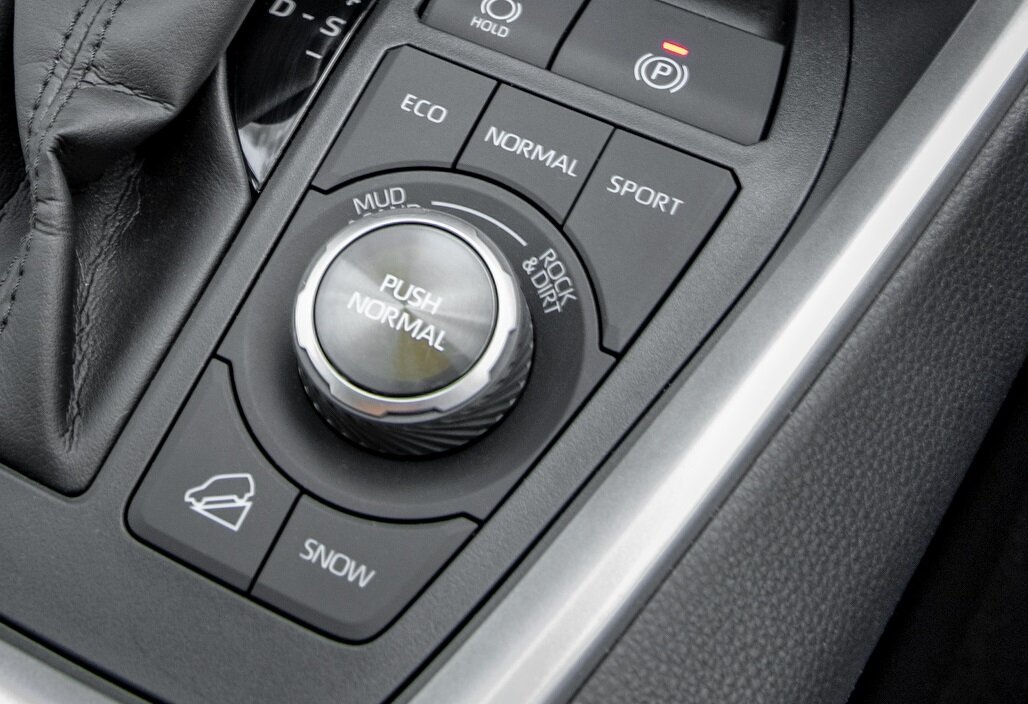
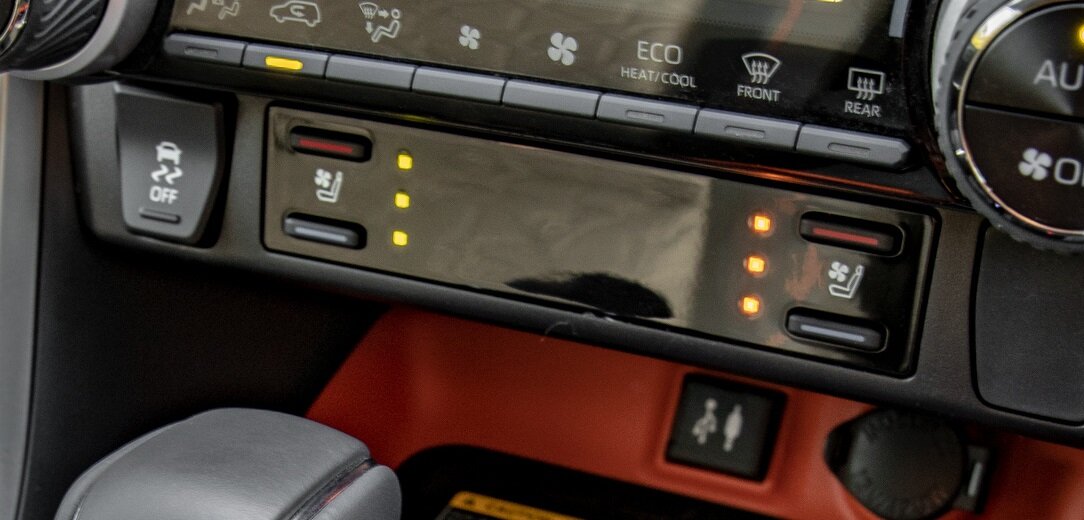
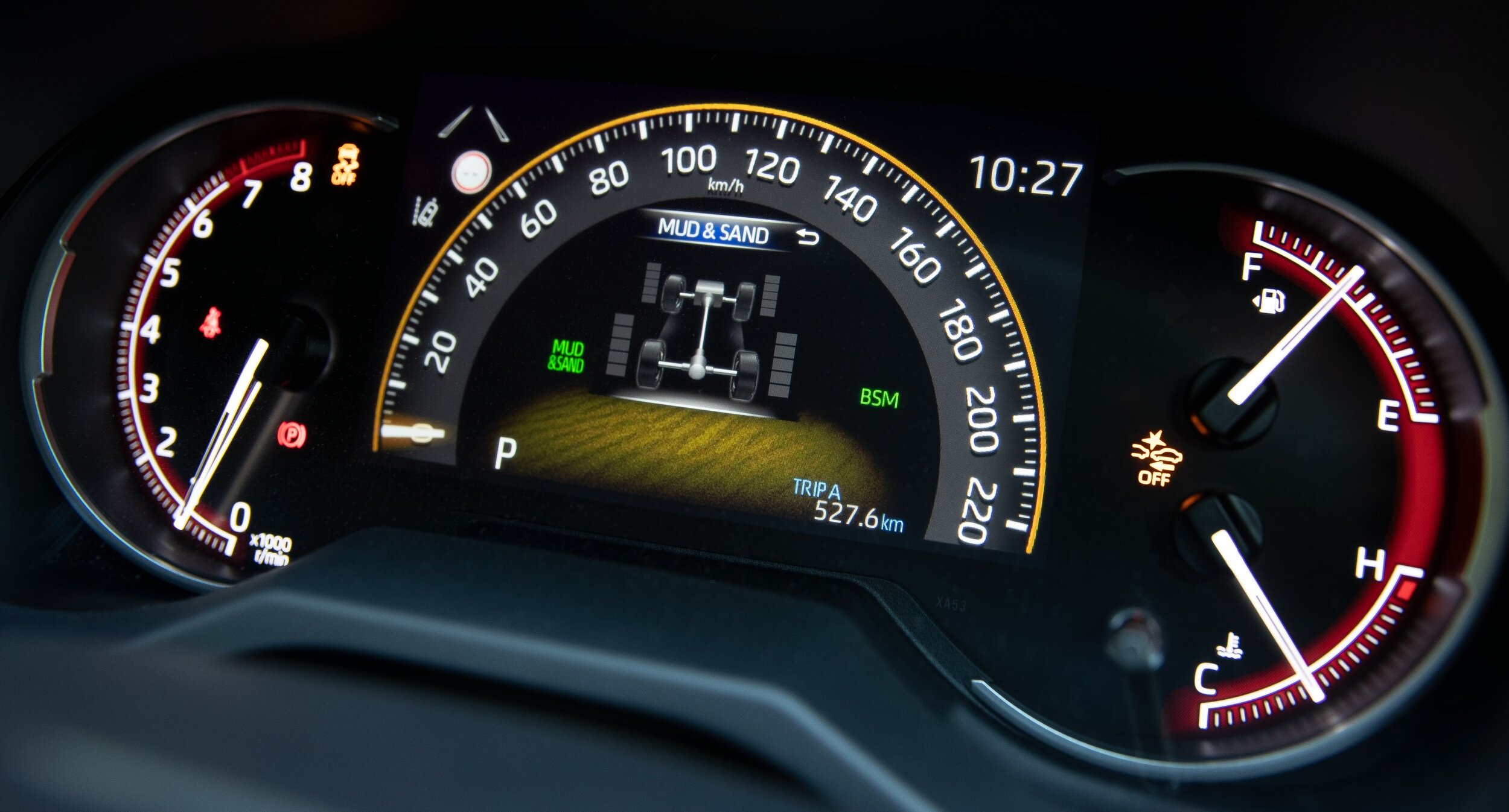
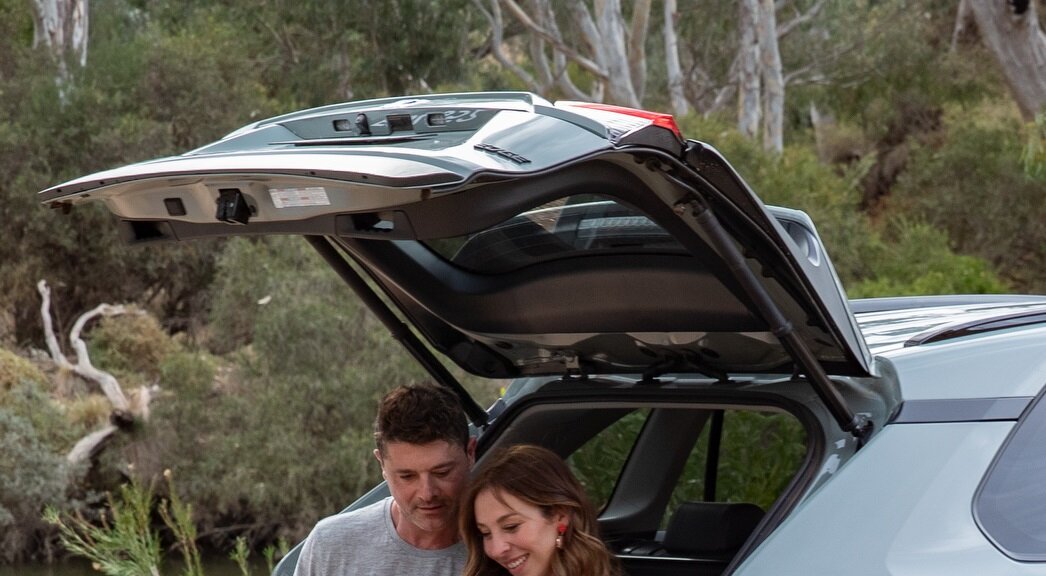
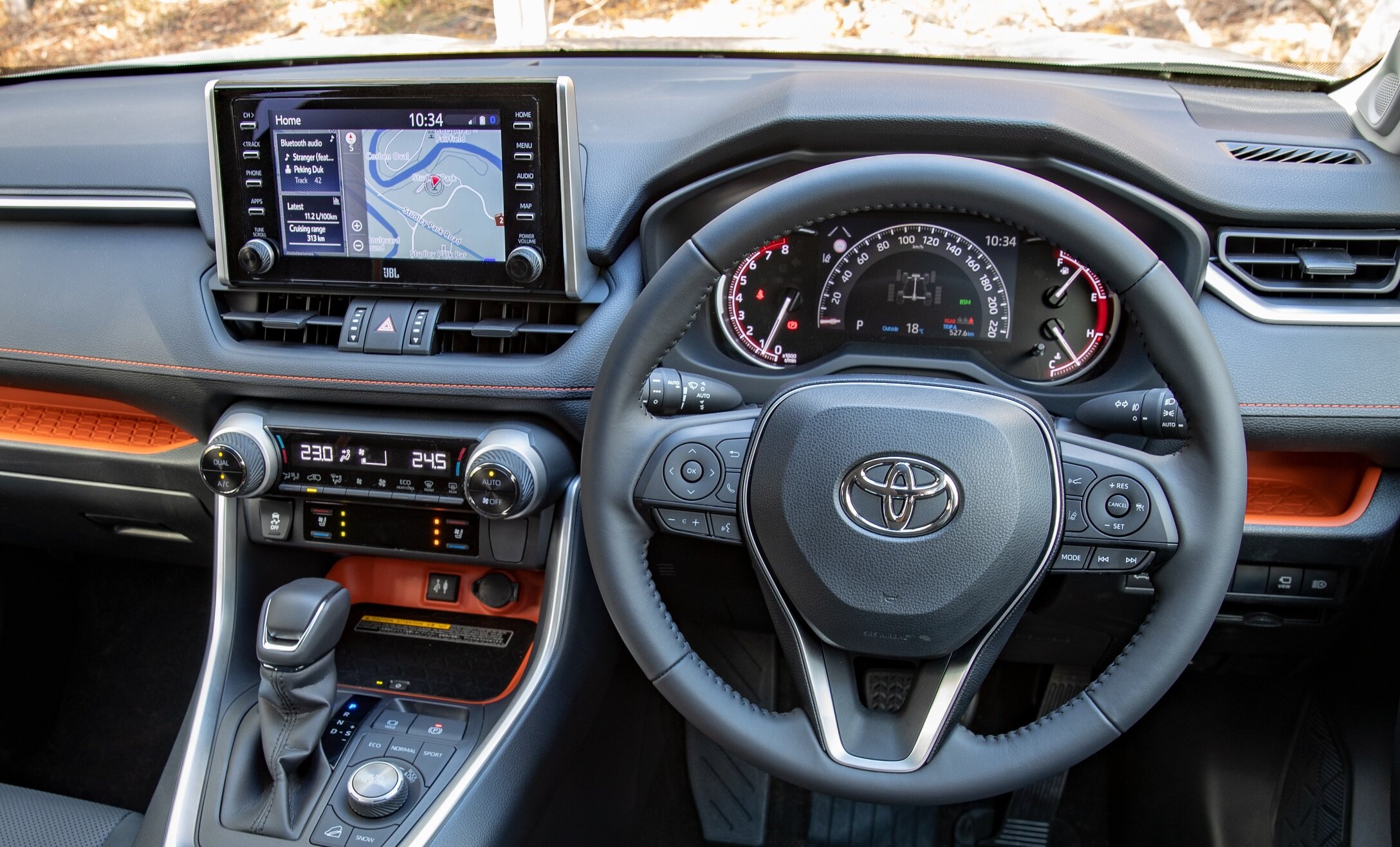
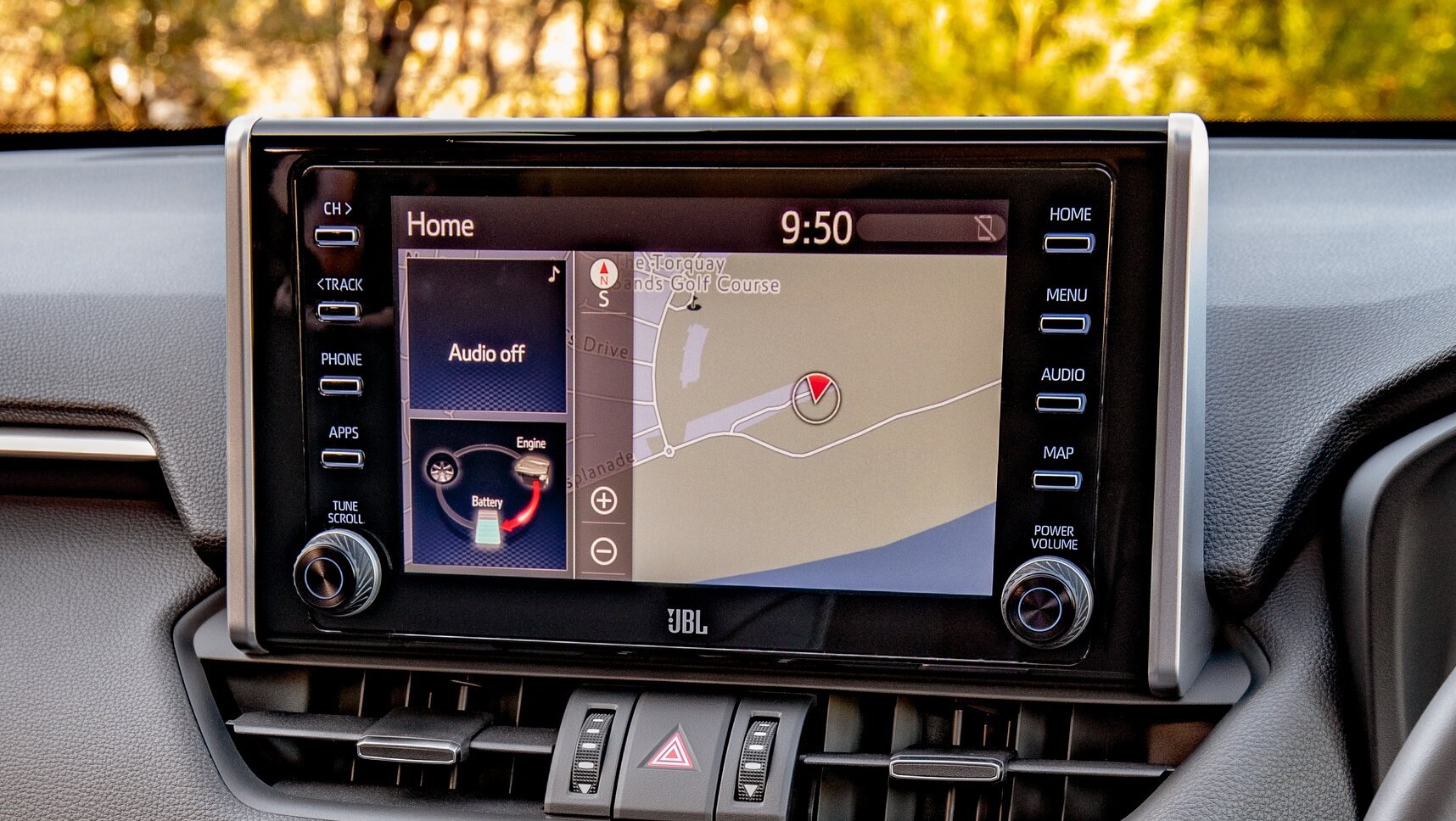

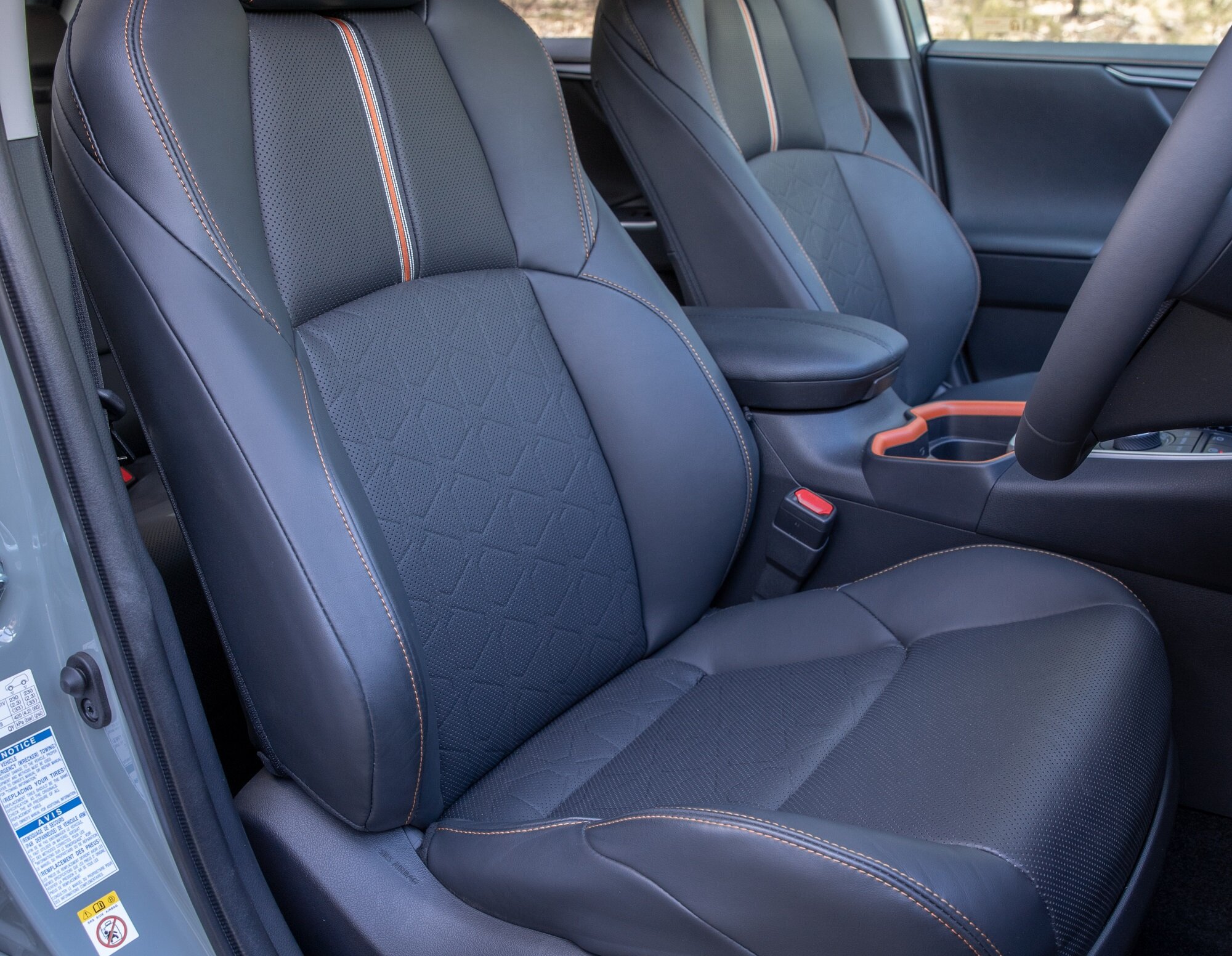

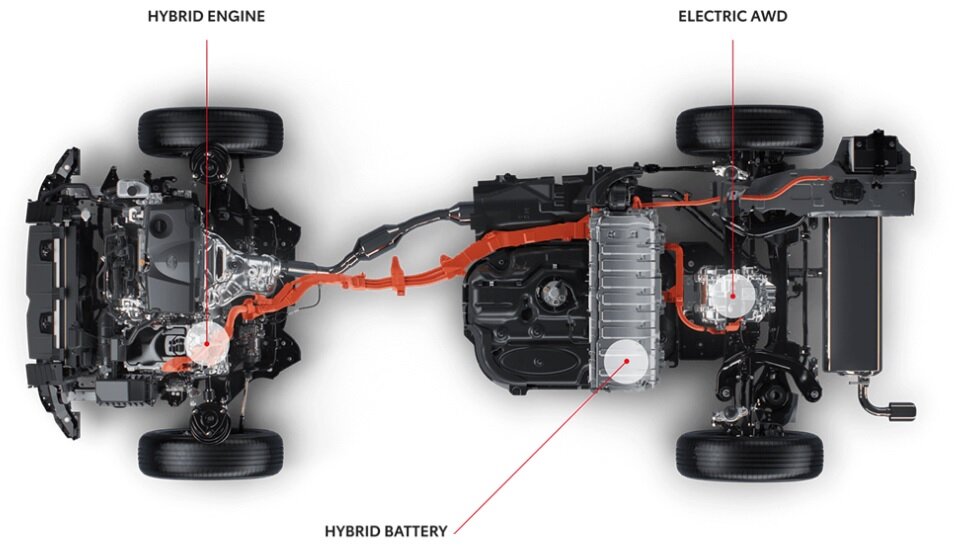
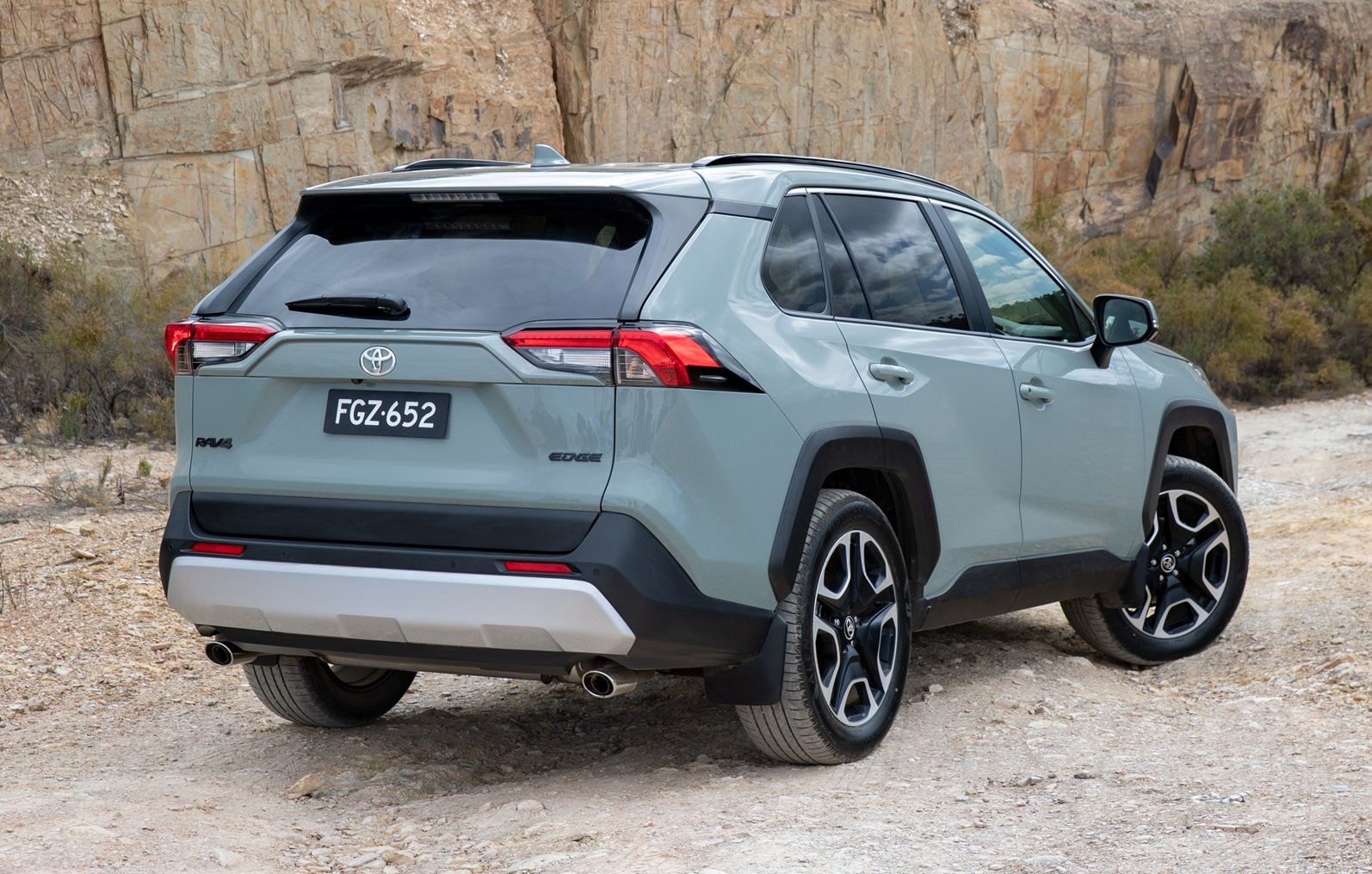
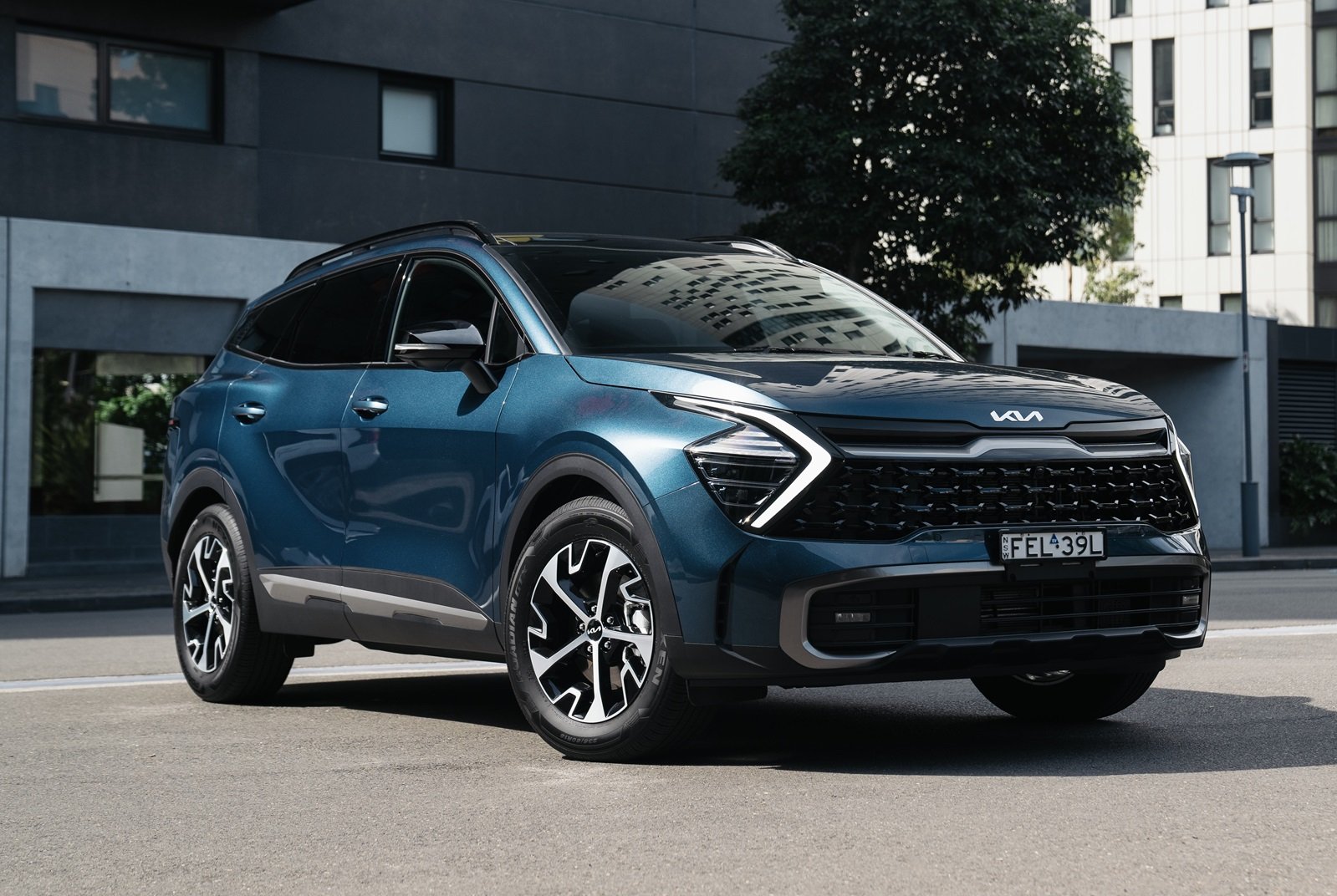








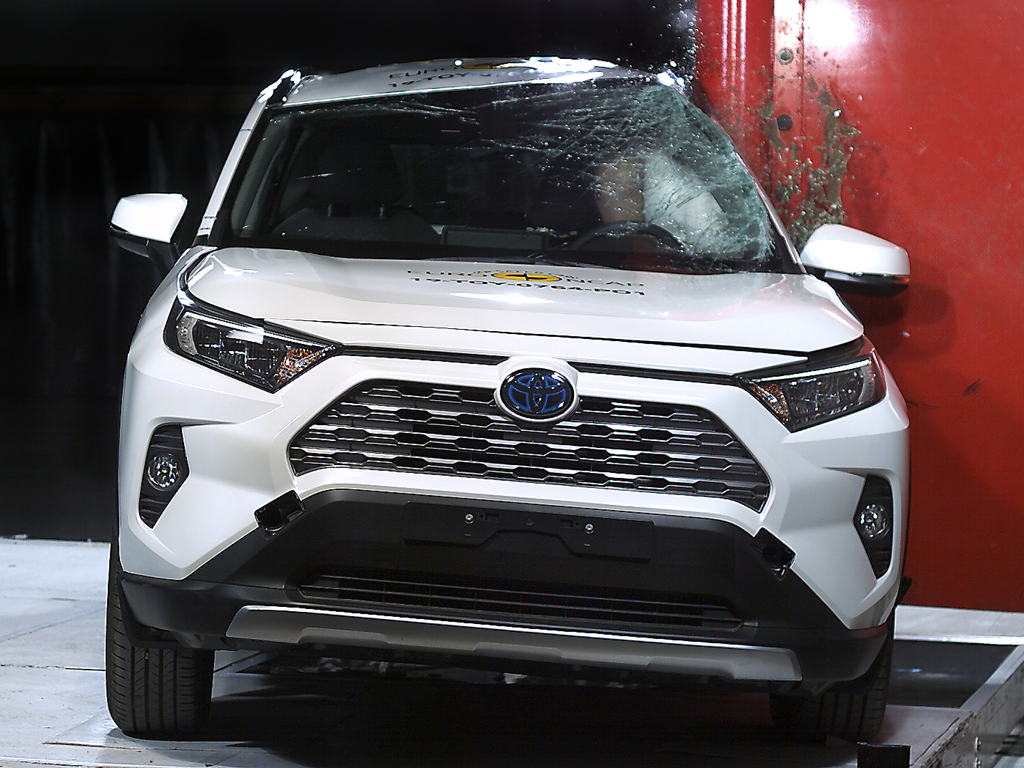



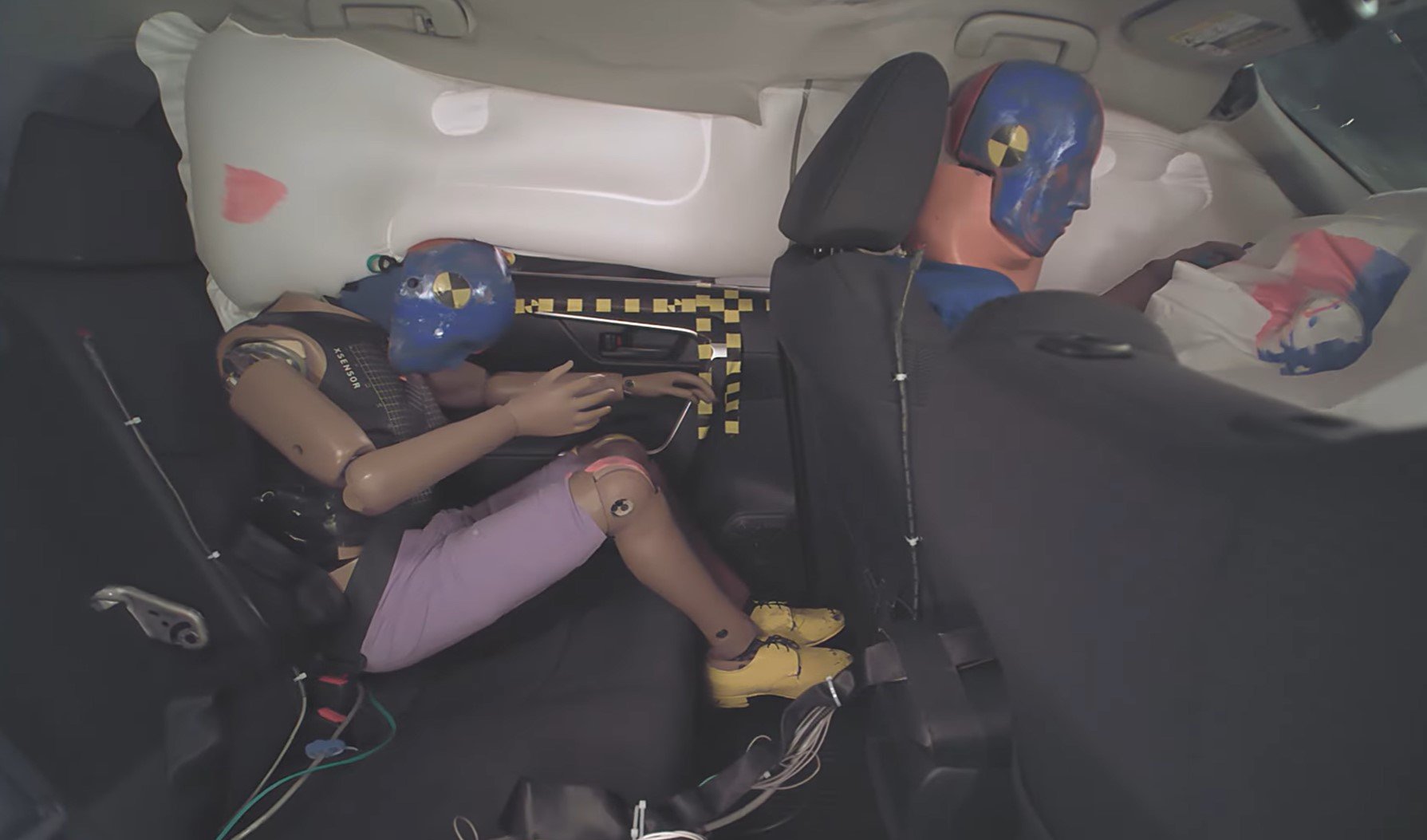
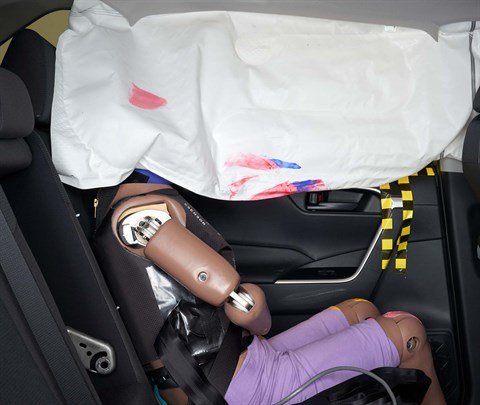



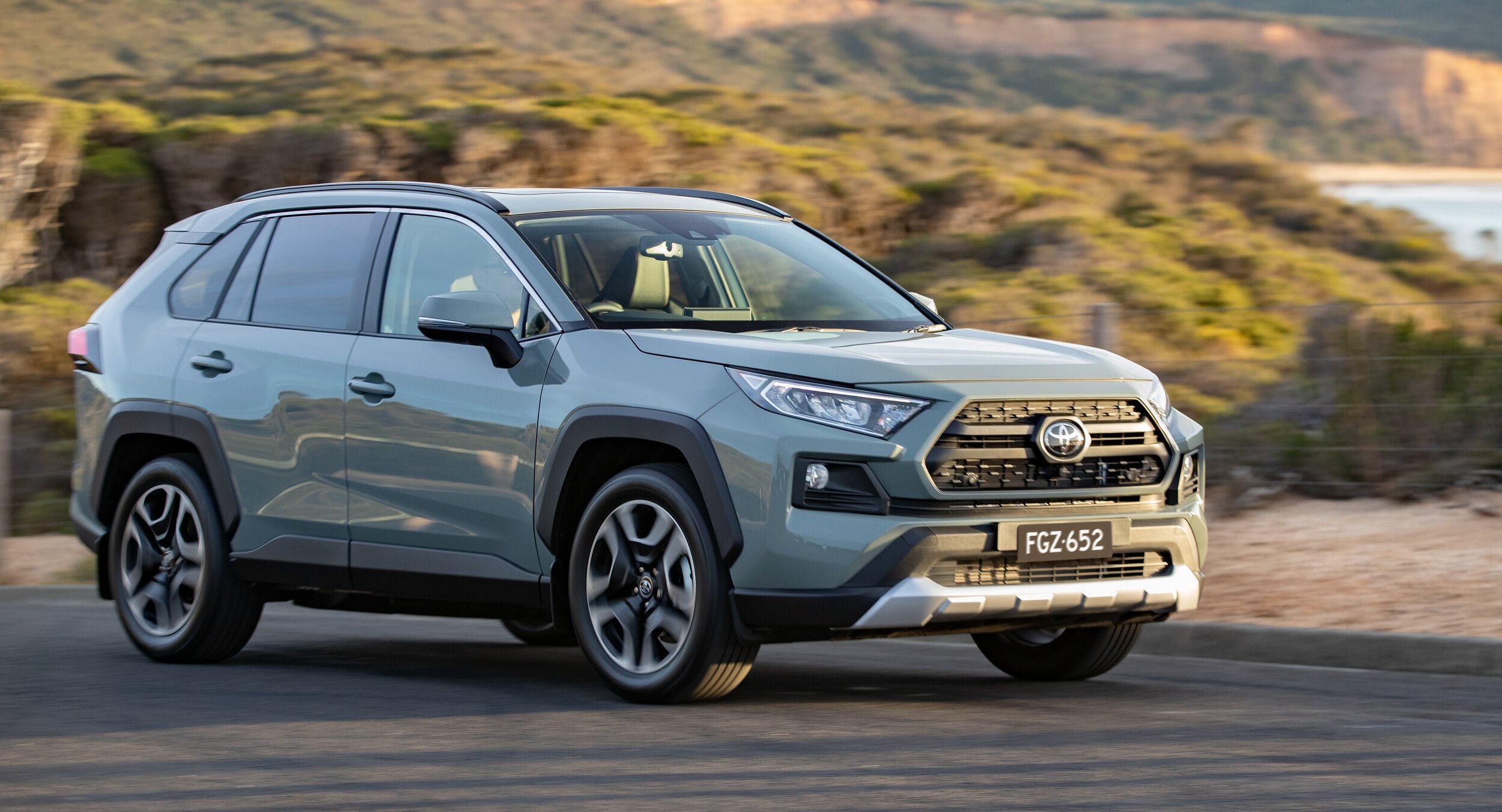



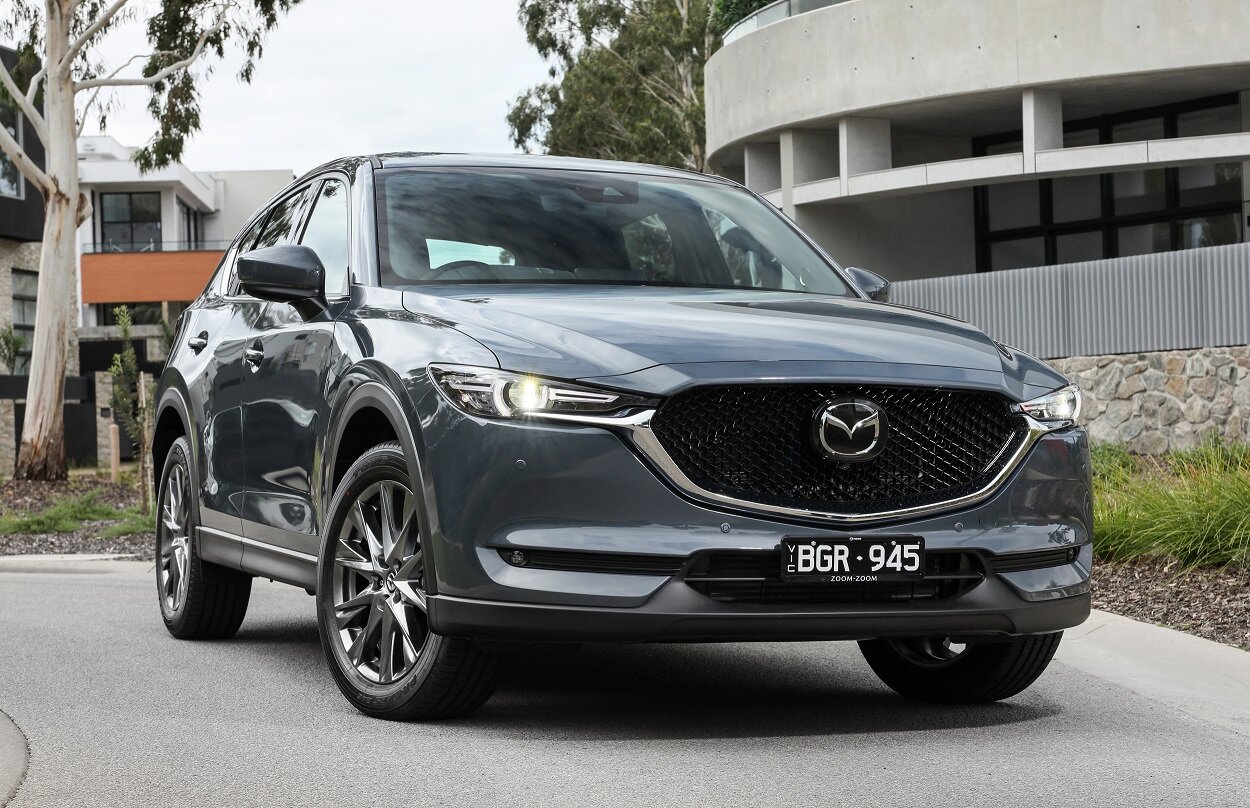
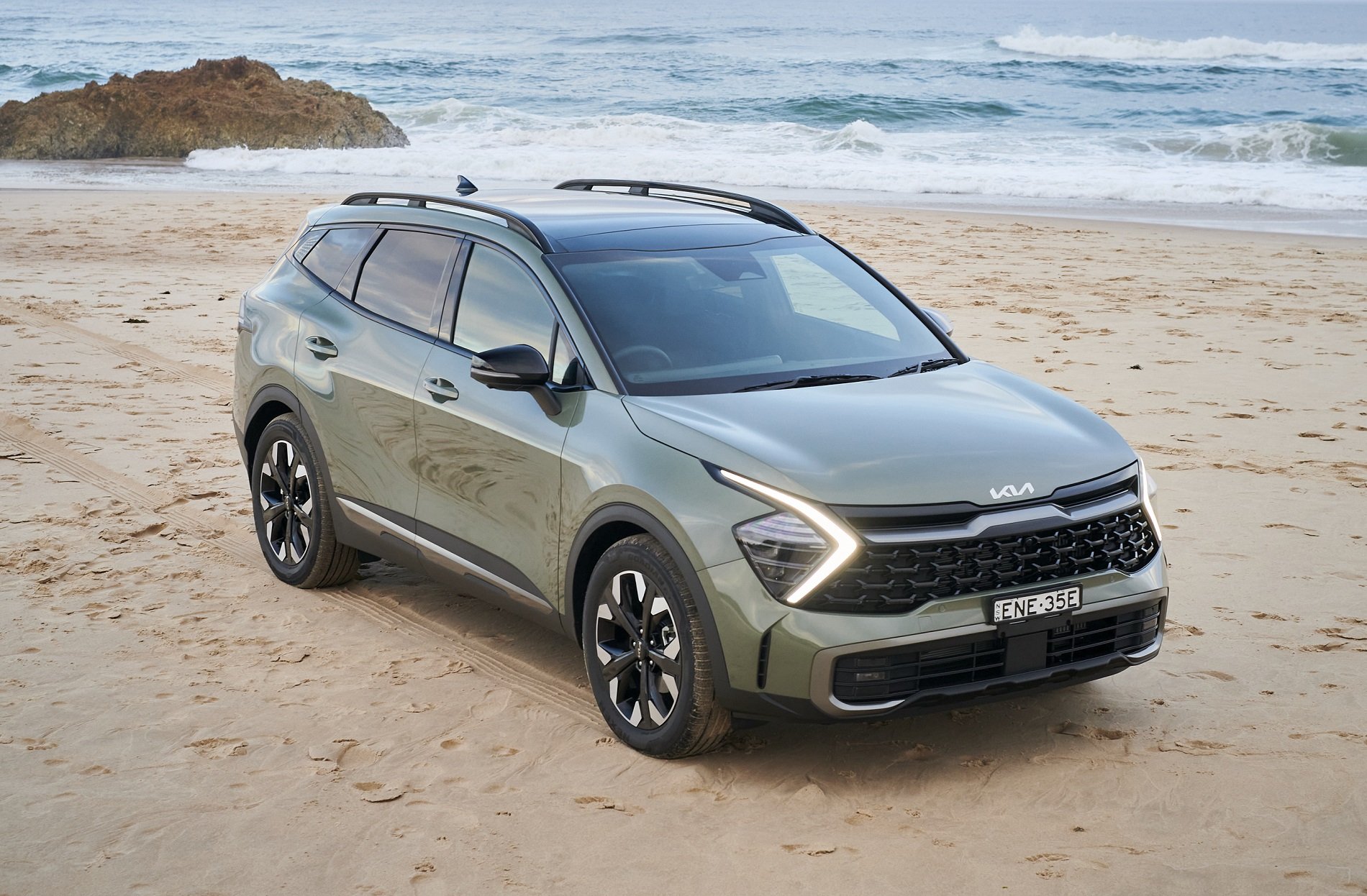


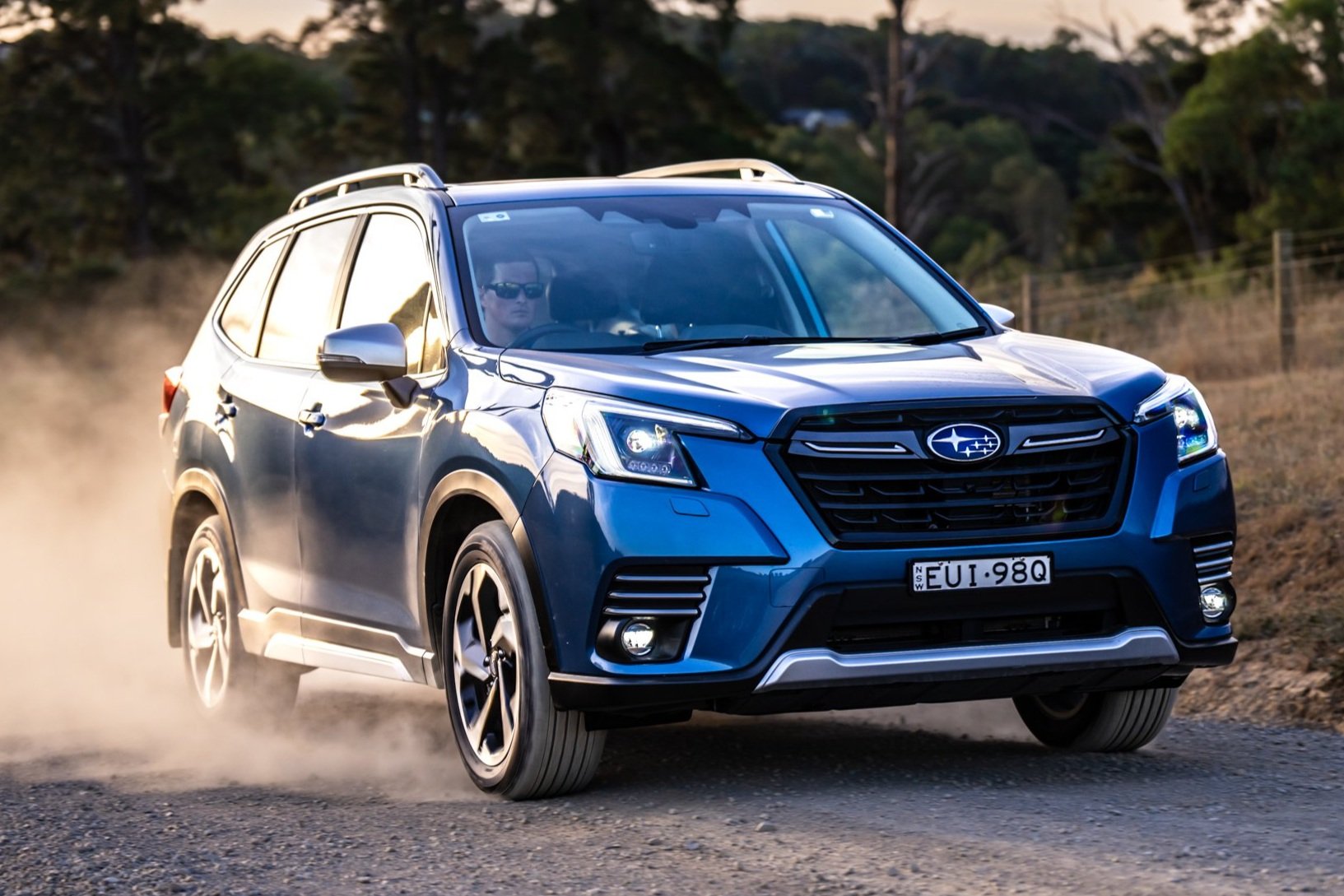
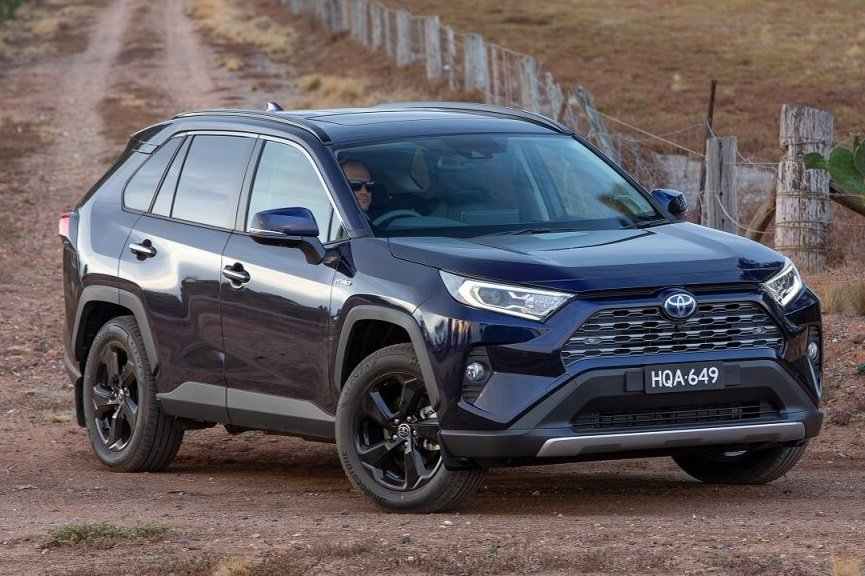

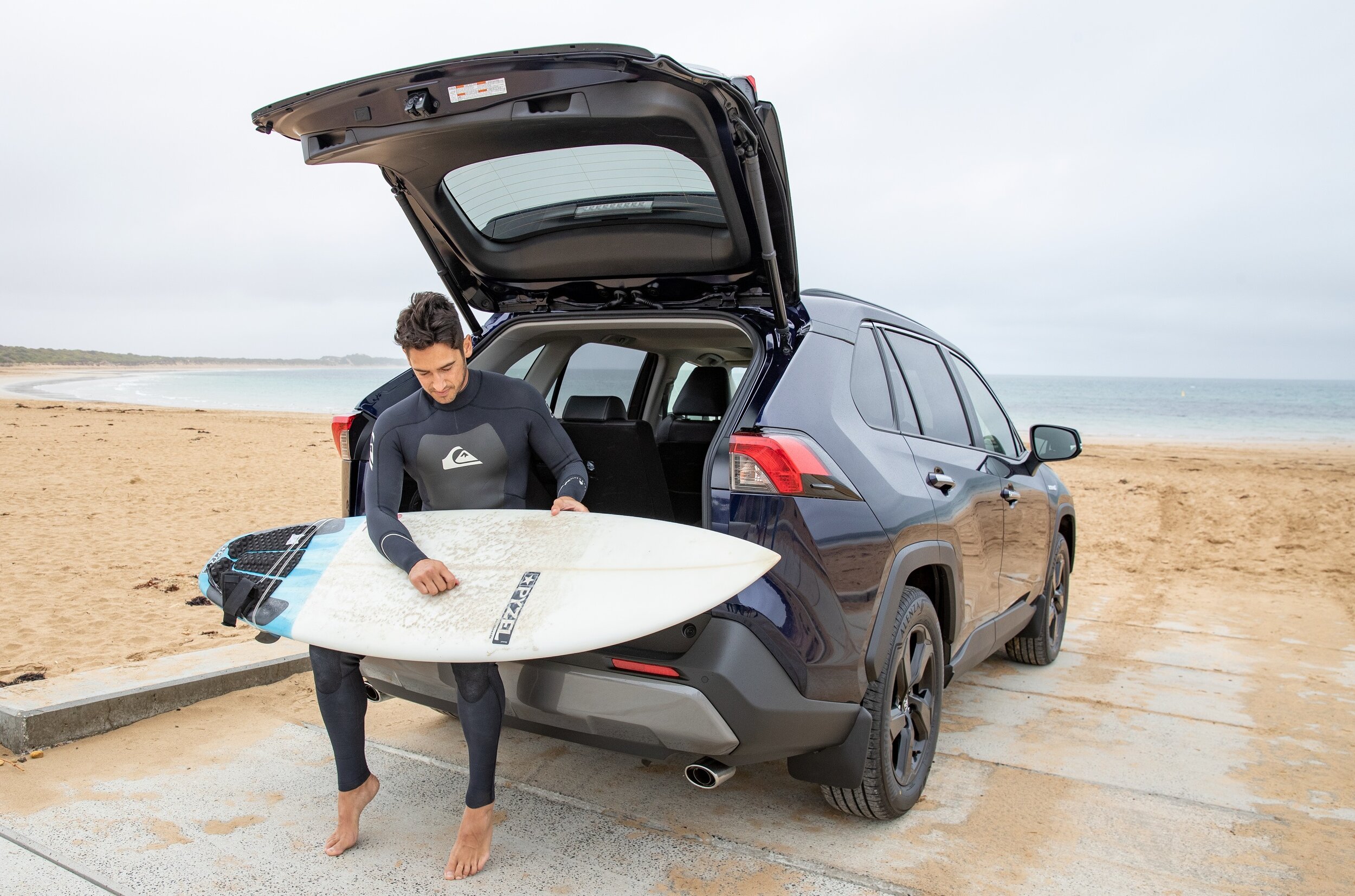











The MG ZS is a small SUV that offers such strong value to most buyers that it should be on your shortlist be default, even when shopping for a used car. But given that no car is perfect, the price could easily distract from its drawbacks.